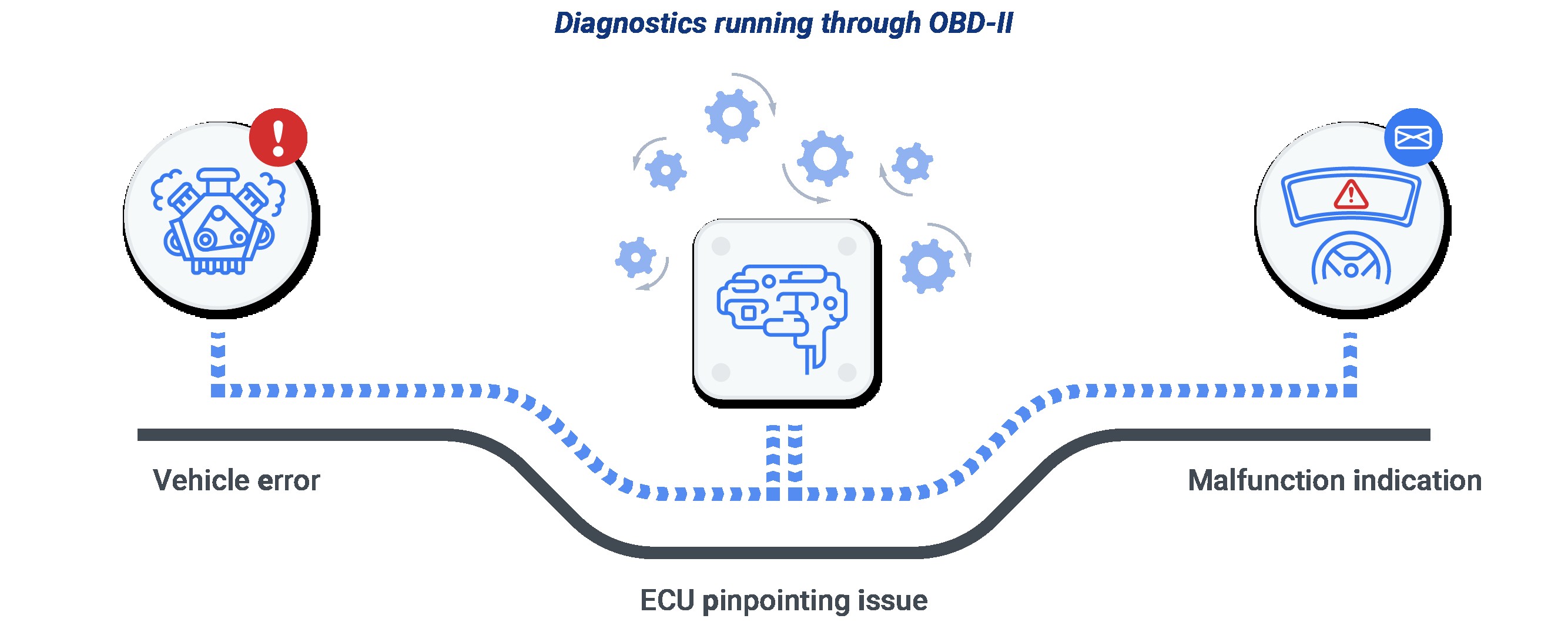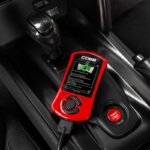Understanding OBD2 compliance is crucial for vehicle owners, fleet managers, and automotive professionals. This guide provides a detailed overview of OBD-II, its functionality, and how to determine if your vehicle is compliant. For a quick intro, check out this helpful 4 Minute OBD2 Tutorial.
What Does OBD2 Compliant Mean?
OBD2, or On-Board Diagnostics II, is a standardized system that diagnoses and monitors a vehicle’s engine and emissions systems. An OBD2 compliant vehicle has a standardized connector, known as the OBD-II port, and adheres to specific communication protocols defined by the Society of Automotive Engineers (SAE). This allows external diagnostic tools to access real-time data from the vehicle’s Engine Control Unit (ECU), identify issues, and retrieve Diagnostic Trouble Codes (DTCs).
How Does OBD2 Work in a Compliant Vehicle?
OBD2 compliant vehicles utilize a network of sensors to gather data on various engine and emissions parameters. The ECU processes this data and compares it to predefined thresholds. If a parameter falls outside the acceptable range, a DTC is generated and stored in the ECU’s memory. A “check engine” light may also illuminate on the dashboard. Connecting an OBD2 scanner to the OBD-II port allows retrieval of these codes, aiding in diagnosis and repair.
Determining OBD2 Compliance: Is Your Car OBD2 Compliant?
OBD2 compliance is primarily determined by the vehicle’s model year and the country where it was originally sold. Generally:
- USA: Gasoline vehicles from 1996 and diesel vehicles from 2008 onwards are OBD2 compliant.
- European Union: Gasoline vehicles from 2001 and diesel vehicles from 2004 onwards are generally compliant.
- Other Regions: Compliance dates vary.
Refer to the vehicle’s owner’s manual or a VIN decoder for confirmation. The presence of a 16-pin trapezoidal connector under the dashboard usually indicates OBD-II compatibility. However, this is not a guarantee.
OBD2 Communication Protocols in Compliant Vehicles
OBD2 compliant vehicles use one of five communication protocols:
- SAE J1850 PWM (Pulse Width Modulation): Primarily used by Ford.
- SAE J1850 VPW (Variable Pulse Width): Primarily used by General Motors.
- ISO 9141-2: Used by some Chrysler, European, and Asian vehicles.
- ISO 14230 KWP2000 (Keyword Protocol 2000): Used by some Chrysler, European, and Asian vehicles.
- ISO 15765 CAN (Controller Area Network): The most common protocol in modern vehicles.
OBD2 vs. OBD1: A Significant Advancement
OBD2 represents a significant advancement over its predecessor, OBD1. OBD2 standardization ensures compatibility across different vehicle makes and models, enabling universal diagnostic tools. It monitors a broader range of systems, stores codes for intermittent faults, and facilitates more accurate and comprehensive diagnostics.
Benefits of OBD2 Compliance
OBD2 compliance offers several benefits:
- Improved Diagnostics: Easier and more accurate troubleshooting.
- Enhanced Emission Control: Contributes to cleaner air.
- Increased Fuel Efficiency: Identification of issues impacting fuel economy.
- Proactive Maintenance: Early detection of potential problems prevents major repairs.
- Vehicle Safety: Monitoring of critical systems enhances safety.
Leveraging OBD2 Compliance for Vehicle Management
Understanding and utilizing OBD2 technology is essential for effective vehicle management. OBD2 compliance allows for comprehensive diagnostics, enabling proactive maintenance, optimizing fuel efficiency, and ensuring compliance with emission standards. Tools like the AutoPi CAN FD Pro provide real-time monitoring and advanced diagnostics, going beyond basic code retrieval.
Conclusion: The Importance of OBD2 Compliance
OBD2 compliance is a cornerstone of modern vehicle diagnostics and management. Understanding what it means and how it works empowers vehicle owners and professionals to maintain optimal vehicle performance, minimize repair costs, and contribute to a cleaner environment. By leveraging the power of OBD2, you can keep your vehicles running smoothly and efficiently for years to come.

